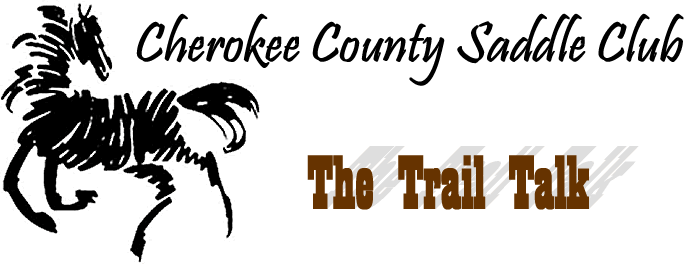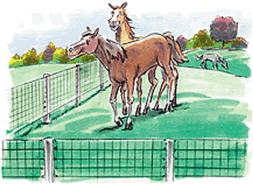
|
Using
Permanent Fencing (Feature article in October/November 2005 Mane Points) Reprinted by permission of Mane Points, a publication of Southern States Cooperative, Inc. |
All
fencing is not created equal, not surprisingly, and when it comes
to fences to contain horses, special care needs to be taken. Steel-wire
mesh fencing, specially designed for horses, is a good option for
keeping horses safe.
Follow this advice from the Penn State College of Agricultural Sciences/Agricultural Research and Cooperative Extension: Horses are far-sighted and look to the horizon for danger, so fencing should be highly visible. Fencing should have some "give" to it to minimize injury upon impact, high enough to discourage jumping (54 to 60 inches about ground level) and solid enough to discourage horses testing its strength. Fencing should have no openings that could trap a head or hoof. Small, safe openings are less than 3 inches square, but can depend on the size of the horse. For this type of fencing, take a look at the Horseman Class 3 Horse Fence by Bekaert. This fence comes in closely spaced 2-inch x 4-inch woven mesh, which prevents horses from stepping through it. A bottom rail with clearance no higher than 12 inches will prevent foals from rolling under the fence. Open spaces between rails or strands should be 12 inches or less. Fencing should not have sharp edges or projections that can injure a horse that is leaning, scratching or falling into it. Rails and wire mesh should be fastened to the inside (horse side) of the posts, which also strengthens the fence. If a horse leans on the fence its weight will not push out the fasteners. Nails and other fasteners should be smooth without jagged parts that can cut the horse or catch a halter. A good example of this is the Solidlock Fixed-Knot Horse Fence by Bekaert, which tightly holds the vertical and horizontal wires together. It is specially designed to protect the horse's coat while making the fence more rigid to absorb the animal's impact. Fencing should be easy to install and maintain
and last at least 20 years. The Bekaert horse fences, available
at Southern States stores, are galvanized with 2.5 times the zinc
coating of traditional hinge joint and other traditional horse
fences, which extend the life of a fence. Fencing needs are different not only for different
animals, but for When horses are in large pastures and have less contact with the fence, a less substantial fence would work. Fence used for a paddock designated as a foul-weather turnout must be sturdy and safe and should be located on well-drained high ground accessible to the stable. Another fencing
scheme is to double-fence so that each paddock has its own fence
with an alley between, especially popular for use with stallions.
Perimeter fencing is another popular safeguard. This encloses
the entire property in fence so that if a horse got loose, it
would not be able to leave the complex or get on a road. |
 the
same animal under different conditions and uses. For instance,
in areas where many horses tend to crowd together, like near gates
and feed/water stations, stronger fencing is required.
the
same animal under different conditions and uses. For instance,
in areas where many horses tend to crowd together, like near gates
and feed/water stations, stronger fencing is required.